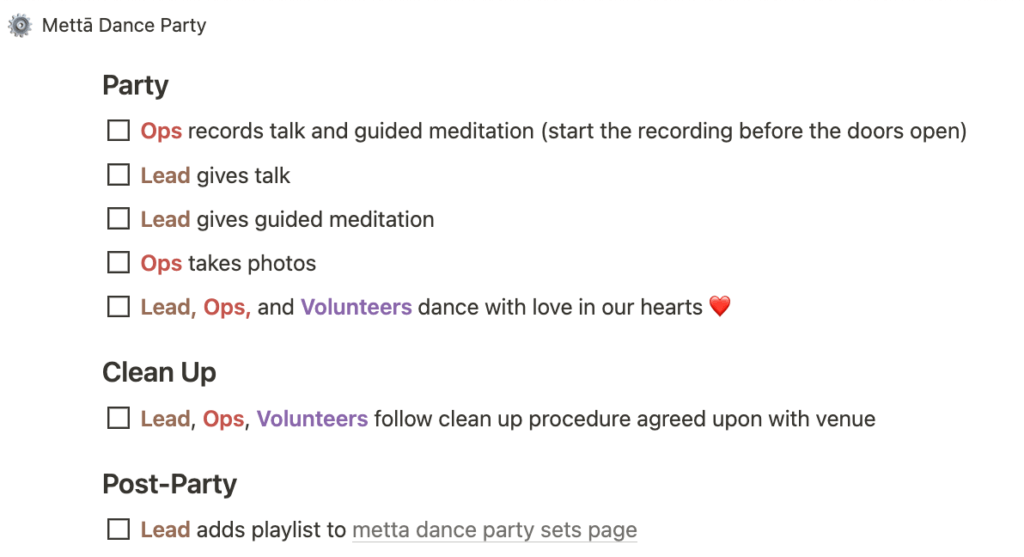Say you host a New Year’s party every year. Successfully hosting this party will probably involve several stages: planning the intention, picking a venue, inviting guests, planning activities, preparing food, setting up music and dance, the actual execution on the day of, clean up, and other miscellaneous post-party tasks.
A complicated project like a party can be a headache, because it involves a lot of logistical considerations that are often mutually dependent. But using a standard operating procedure (SOP) can help minimize how complicated and frustrating the whole process is, and maximize your chances of everyone having a great time.
Standard Operating Procedures (SOP’s) are detailed instructions that outline the steps and processes required to carry out specific tasks or activities within an organization. They help ensure consistency and quality in the execution of those tasks.
Here’s an example: Elizabeth Warren’s 2020 presidential campaign staff developed a “selfie line,” so that as many voters as possible could take selfies with Warren.
This one-on-one time gave Warren valuable insight into her supporter’s needs. Additionally, it functions as a valuable strategy for social media, as supporters usually post the selfies on social media in what is essentially free advertising.
As far as I’m concerned, SOP’s are necessary and essential if I’m working with other people, and there are complicated tasks that we do repeatedly. I also find SOP’s useful for my own complicated tasks and processes.
At their heart, SOP’s are basically checklists. They say who should do what, in what order.
When you start the process for a particular task, like your annual New Year’s Party, you make a copy of the template of the SOP, into an instance of that template. As you proceed through planning and hosting the party, you check off each item. If at any time you notice that the SOP can be improved or expanded, you make edits to the canonical template, so that those improvements can be used in future years.

Apollo 9 Lunar Module Checklist
Here are some things I’ve used SOP’s for:
- Hosting in-person events or parties
- Running online programs or courses
- Recording podcast interviews
- Writing blog posts
- Running meetings
There are a lot of tools available for creating, using, and maintaining SOP’s. At this time, I currently use Notion, and a system based on Khe Hy’s Notion for Business templates. There are also some other good options specifically designed for SOP’s, including Process Street and Manifestly.
It can be a little cumbersome to use SOP’s. It takes an investment of time and effort to create and maintain them. It also requires buy-in from everyone on a team that SOP’s are worth creating. For smaller or one-off projects, they may feel like overkill to you or your collaborators. But if you’re doing certain projects on an ongoing basis with a team of collaborators, and you care about the quality of your projects, SOP’s are invaluable.

An excerpt of our SOP for running Mettā Dance Parties
While SOP’s do require an initial amount of effort to create them (and learn how to use them), that investment pays off in the long run. SOP’s make complicated, multi-stage projects easier, less stressful, and higher quality.
Additional Resources
- Work the System by Sam Carpenter (notes)
- The Checklist Manifesto by Atul Gawande (notes)
